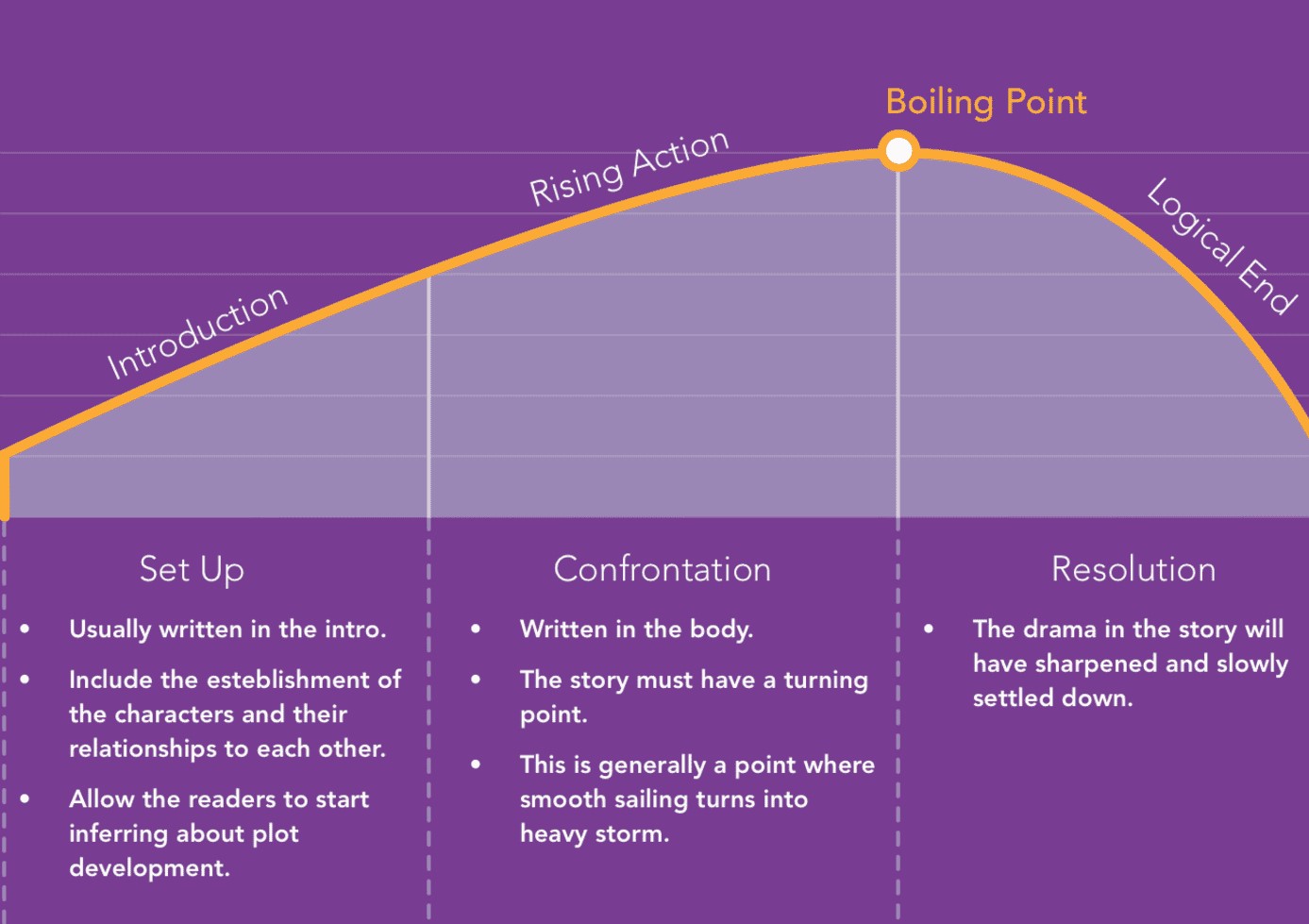Creative Writing Essay
Creative writing essays are one of the most open-minded, and free-spirited writing prompts that a student will face in either high school or college. This essay falls into the category of narrative essays, since it gives students the freedom of self-expression, and trains them to stretch their imagination. In other words, this would be the antonym of an analytical or persuasive essay, because it does not use technicalities.
What Is a Creative Essay
As stated previously, this is a style of essay that forces a student to look past guidelines and set structures. In this scenario, your job is to create a story. Not just any story, but one that has an interesting plot as well as a compelling path! The beautiful thing about this is that there are not any topic restrictions; you actually get to be creative! Sometimes, a professor may narrow down the topics into an individual category, but when it comes to writing out the paper, you must create your own path. Wonder how to write a creative essay? Let’s start working on your essay by finding some creative essay ideas.
Creative Essay Topics and Ideas
Before putting yourself into work, you should pick among creative writing essay topics that you will be talking about. Here we got some fresh creative essay topics from our top writer to make your choice easier:
- Explain an event in your life that spiraled out of control and flipped its course.
- Create a scenario that directs the end of the world.
- Camouflage the concept of love in a story that is completely irrelevant.
- Design in a story in which one person’s beliefs or ideas helped reform the future of society.
- Propose a scenario in the distant future in which technology controls all.
- Describe something that you can’t live without; it might be your hobby or a thing that you are dedicated to.
- Express your thoughts about a topic that hurts you.
- Imagine that you became invisible for one day, what would you do?
- What would your reaction be if one day you woke up in someone else’s body?
Naturally, you can create one that is completely unique to you and the ideas that you form. These are here to get you started on the right path towards a brilliant story.
General Tips Pre-Writing
I know, you might be eager to start jotting down notes and ideas right away since this is such a liberating assignment, but it would be intelligent to organize your efforts. Here are some creative writing steps to take before you start working on the topic:
- Choose your subject/topic: Before you begin anything else, set your telescope on the theme that you would like to write about. It does not necessarily have to be one that you are well-versed in; rather, pick a topic that intrigues you but also one that can teach you a thing or two. This leads us to our next step.
- Do some research: Even if you have chosen a subject that is second nature to you, it is always important to investigate deeper into the topic. Every time you start carefully studying an issue, you will find more facts and key points. Use several sources and mix them together.
- Plan out the essay (how, what, when, where, who): These are five questions that must be answered while typing out your story. Make sure that a precise setting is introduced and keep your audience tuned into the story. Boredom is your worst enemy! * Formatting the story ahead of time allows for a clear thought process as well as having an excellent preview of what is to come.
- Record ideas (keep a Log): Outside of the time that you are working on the story, it is a good idea to keep a journal. Sometimes, out of the blue, thoughts and ideas will come into your mind that could improve the style of your essay. Even if it may seem unfitting, writing them down at a constant rate could mix two ideas that create something exceptional!
- Write a rough draft: Try to focus on the flow of the information and put some of your ideas on paper in chronological order, don’t hurry, stay cool-headed, and from time to time reread what you have already written.
- Put everything in the right order: Read your rough draft again, exclude all unnecessary information, lay out your thoughts in chronological order, watch the flow of your ideas, provide a smooth transition from one idea to another, your essay shouldn’t be messy.
- Start writing the essay: Once you have a format that is satisfactory, it is time to put pen to paper (or fingers to keyboard) and gradually build your tale. As you use your structure to guide you along the way, it may be possible that things do not flow as nicely as you may have expected. This is not a problem and editing the planner is definitely an easy and effective way of making sure that the writing is still focused on your initial plans.
Title
When you have already chosen what you are going to write about, you should design a creative essay title. It’s a big question, which might take you plenty of time to think about. Below you will be able to find some tips, the purpose of which will be simplifying the creation of the best title.
- First and foremost your title should be catchy, the purpose of the title is to grab the reader’s attention as soon as he had read the title. One way of doing it is to use a “flashback” as the title of your creative writing essay, and it will let your future readers understand what kind of story you have written.
- The other one is summing up the story that you have written in three words. If your essay is about love, your title might be “Love, Hate, Despair: The story of a broken heart.”
- Likewise, you may use any quote which relates to your essay in general, but still, this quote should be powerful enough to grab your reader’s attention.
- Also, your title may be the main idea of your essay, for example, if your essay is about your hobby or your biggest passion in life, then title may be “The quintessence of my life“
Outline
The creative essay outline follows the standard essay structure. It consists of an Introduction, a Body, and a Conclusion. Each one plays a major role in plot development, and the amount of variety that exists in the formatting of this essay is quite large! However, the most effective and commonly used procedure is the Oxford method which introduces the 3-Point-Structure. This involves: The Set-Up -> Confrontation -> Resolution.

- Set-Up: Usually written in the intro, the setup includes the establishment of the characters and their relationships with each other. Who are friends with who? What are the predetermined connections between the members of the group? Allow the readers to start inferring about plot development with the information that you have laid out.
- Confrontation: Written in the body, the story must have a Turning Point. This is a point of conflict where smooth sailing turns into a heavy storm. This moment can be expected by clue-giving plot development or can come out of nowhere. That depends on what you as the writer decide to do. For example, you can start hinting that things feel eerie and off in the plot but then straighten everything back to normal without changing anything major. Or, the story could be advancing smoothly, and all of a sudden, something major happens, and the plot makes a sharp turn.
- Resolution: After passing the turning point, the drama in the story will have sharpened and slowly settled down. At some eventual point, the drama will kick up back up again and will reach a peak moment! Now, this can either be at the very end of the story (cliffhanger), or this can be told somewhere in the middle or beginning. Once again, this depends on you as the writer.
Introduction:
As with any narration, the first step that must be performed is setting up the scene. Describe the time of day, place, or location, and give a background of the current situation. This initial set up is vital because it sets the mood and flow of the entire story. That being said, make sure to spark up the setting as much as possible to create an excellent illustration in the reader’s mind. Use vivid details; things such as personifications, metaphors, and symbols are a great way to shake up the story from the start! A very common tactic used by famous writers is to throw the reader right into the action. For example, the story could start out with somebody getting murdered, or it could be a flash-forward into an event that will occur later on. Since this is your story, create an intro that is exciting to read and make it unique in accordance with your style.
Body Paragraph:
The bodies are used to develop the plot and move the story forward. However, these paragraphs can also be used to change up the mood and tempo. Since your great introduction set the base for those two aspects, it is not a bad idea to change it up. For example, if the story is moving at a slow rate, as the author you can input the confrontation right then and there. This catches the reader off guard and switches up the mood and tempo of the narration. You can also create a false confrontation, keeping your readers on their toes.
Tip from Assignment24x7.com: Use transitions. Words such as however, therefore, but and also are good ways to transition from one thought to another. What makes them especially useful in creative writing is the fact that they push emphasis onto whatever event that you are bringing about. This allows for more drama and suspense, while also keeping the story flowing smoothly.
Conclusion:
The conclusion usually allows the writer to tidy up the plot. Create a set-up, present a confrontation, and sum things up with a resolution. Most of the time, the conclusion will not build-up to the peak of the story, but many professional creative paper writers use cliffhangers. This is a writing technique that allows the author to leave the story unfinished and leave the audience in a cloud of suspense, never to be truly discovered. Movies and TV shows such as Inception, The Sopranos, and 28 Days Later use this fascinating technique, and although it may seem infuriating, it is a brilliant way to end a story…. Or not! Overall, the goal of the conclusion is to leave a strong impression in the reader’s mind!
Post-Writing Tips
Immediately after finishing your work of art, take a mental break (trust me it is necessary). As a writer, you have drained a lot of mental energy on creating a story that is unique and exciting to read, so take some time off and remove your eyes from the screen! Afterward, make sure to do three essential tasks to have a fully finished custom creative essay.
- Re-Read and Check the Tempo: When initially writing out the intro, the narration started out at a certain pace. As the plot progressed, so did the flow of the story; it may have sped up or slowed down. The point is to make sure that the flow is satisfactory. On the one hand, having a bored reader is no fun, but neither is having one that cannot process everything being hurled at him!
- Check for Grammatical Errors and Use a Thesaurus: Remember we talked about using vivid details? Yeah, this is rather important, so throwing a thesaurus into your game is not a bad idea as it adds style points to the story and allows you to explain things in a more illustrious manner. Also, having grammatical errors is never a good thing in any essay, so make sure they do not interrupt the reader’s comprehension of your narration.
- Have a Peer to do some Proofreading: It is practically impossible to catch every mistake you make as a writer. Have a friend or your teacher proofread your work for two main reasons: the first is to eliminate any unnoticed grammatical mistakes, and the second is to make sure the story makes sense to an outside party. Sure, as the writer, you know what you are trying to say, but a different brain may have trouble comprehending your word-painting. If both of those traits are perfect, then you will have a second pair of eyes to let you know that it is good to go!


